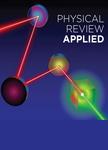版权所有:内蒙古大学图书馆 技术提供:维普资讯• 智图
内蒙古自治区呼和浩特市赛罕区大学西街235号 邮编: 010021

作者机构:CAS Key Laboratory of Quantum Information University of Science and Technology of China Hefei Anhui 230026 China CAS Center for Excellence and Synergetic Innovation Center in Quantum Information and Quantum Physics University of Science and Technology of China Hefei Anhui 20026 China Key Laboratory of Microelectronics Devices & Integrated Technology Institute of Microelectronics Chinese Academy of Sciences Beijing 100029 China Shenzhen Institute for Quantum Science and Engineering Southern University of Science and Technology Shenzhen 518055 China Guangdong Provincial Key Laboratory of Quantum Science and Engineering Southern University of Science and Technology Shenzhen 518055 China Department of Physics University at Buffalo SUNY Buffalo New York 14260 USA Department of Physics and Astronomy University of California Los Angeles California 90095 USA Origin Quantum Computing Company Limited Hefei Anhui 230026 China
出 版 物:《Physical Review Applied》 (Phys. Rev. Appl.)
年 卷 期:2021年第15卷第4期
页 面:044042-044042页
核心收录:
基 金:Guangdong Provincial Key Laboratory, (2019B121203002) U.S. ARO, (W911NF1410346, W911NF1710257) National Natural Science Foundation of China, NSFC, (11625419, 11904157, 12034018, 12074368, 61922074, 62004185) National Natural Science Foundation of China, NSFC Chinese Academy of Sciences, CAS, (AHY080000, XDB24030601) Chinese Academy of Sciences, CAS National Key Research and Development Program of China, NKRDPC, (2016YFA0301700) National Key Research and Development Program of China, NKRDPC Fundamental Research Funds for the Central Universities, (WK2030000027) Fundamental Research Funds for the Central Universities
主 题:Magnetic anisotropy Quantum information with solid state qubits Spin blockade Spin-orbit coupling Valleytronics Double quantum dots Elemental semiconductors Electron spin resonance
摘 要:Tunable synthetic spin-orbit coupling (SSOC) is one of the key challenges in various quantum systems, such as ultracold atomic gases, topological superconductors, and semiconductor quantum dots. Here we experimentally demonstrate controlling the SSOC by investigating the anisotropy of spin-valley resonance in a silicon quantum dot. As we rotate the applied magnetic field in plane, we find a striking nonsinusoidal behavior of resonance amplitude that distinguishes SSOC from the intrinsic spin-orbit coupling (ISOC), and associate this behavior with the previously overlooked in-plane transverse magnetic field gradient. Moreover, by theoretically analyzing the experimentally measured SSOC field, we predict the quality factor of the spin qubit could be optimized if the orientation of the in-plane magnetic field is rotated away from the traditional working point.